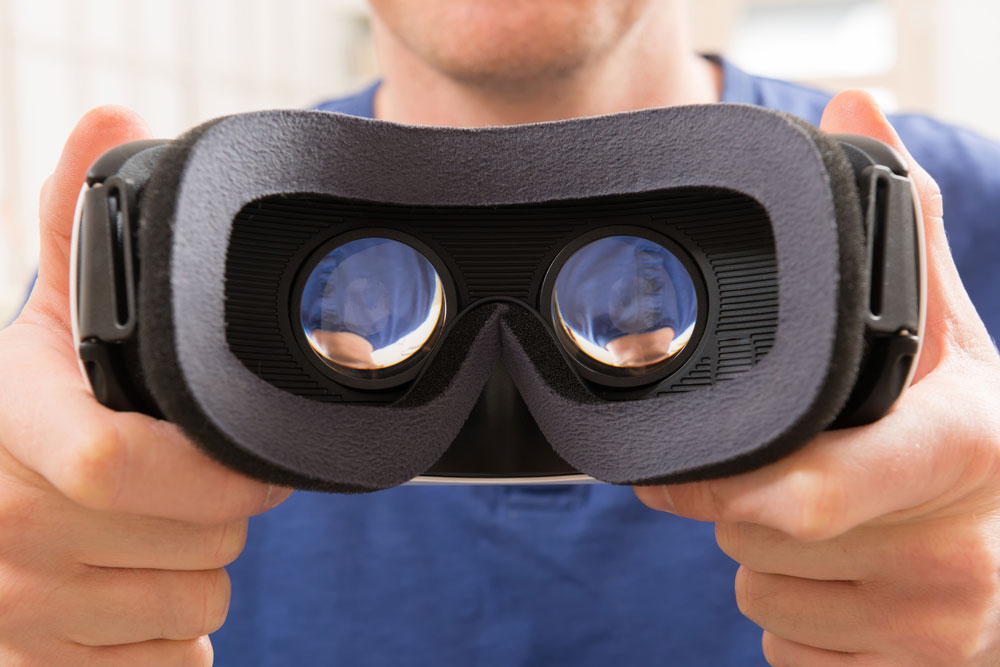It’s a virtual house party, a ‘heroin cave’ filled with triggers — partygoers using and dealing drugs, a table peppered with syringes, pill bottles and pizza boxes, and the smell of burnt marijuana and cigarette smoke. For many heroin users, it’s a familiar setting.
The heroin cave is one of several immersive environments generated at the Virtual Reality Clinical Lab at the University of Houston’s Graduate College of Social Work. The lab’s goal is to implement virtual reality settings designed to study behaviors and addictions while also scouting helpful methods for interventions.
Patrick Bordnick, Ph.D., set up the lab in 2008 and has conducted similar projects to study addictions related to food, nicotine, alcohol and heroin. The process of developing immersive environments is much like “making a movie,” with researchers storyboarding concepts and moving up to full-scale 3D models, he said.
Bordnick and his team designed the program to be as realistic and customizable as possible with true-to-life elements that “go well beyond the fantasy level of a video game,” he said.
The virtual reality therapists control and customize environments while guiding patients through different experiences. They ask questions and attempt to verbally induce heroin cravings in patients while adjusting visual cues to be more effective for the individual. This helps patients form positive coping mechanisms and responses to real-life situations that could trigger cravings.
The program was developed as a form of cue-reactivity therapy, which was born from the theory that cravings can be induced in people with substance use disorder (SUD) when exposed to social and environmental situations that encourage drug use.
A 2014 study published in the journal Frontiers in Human Neuroscience validated Bordnick’s work.
The study, which sought to measure the effectiveness of virtual reality in inducing cravings for people with SUD, found that substance-related VR cues did induce significant cravings when compared to… (continue reading)

















